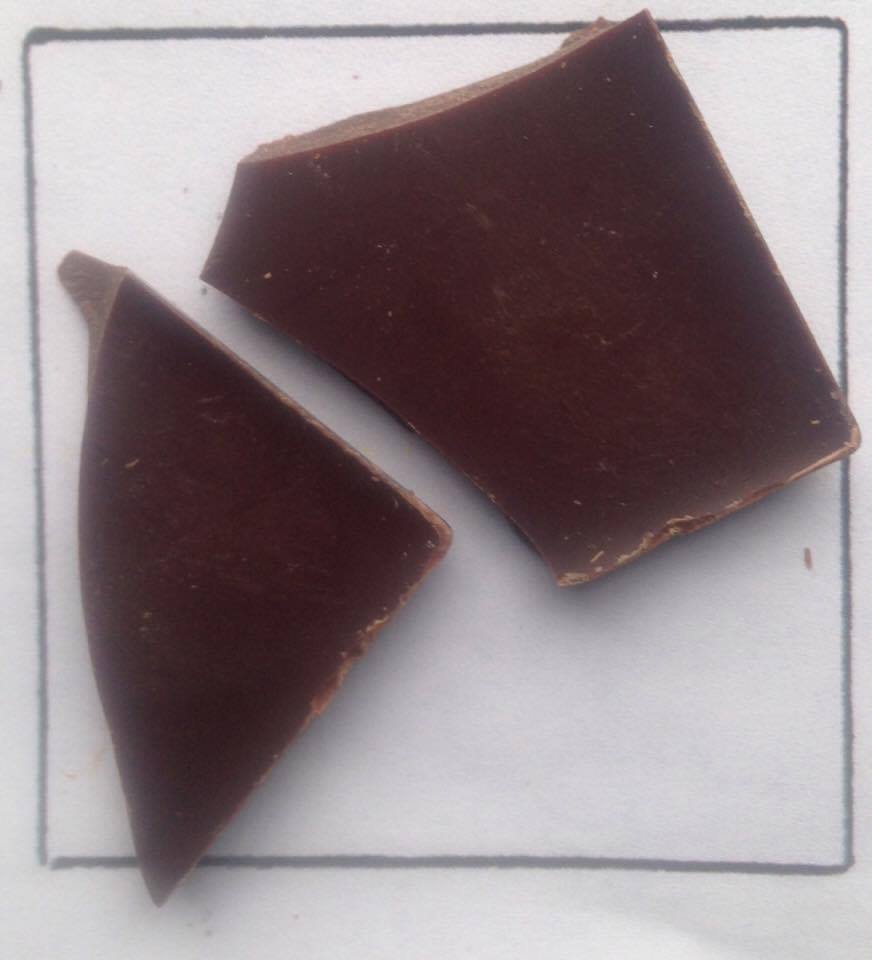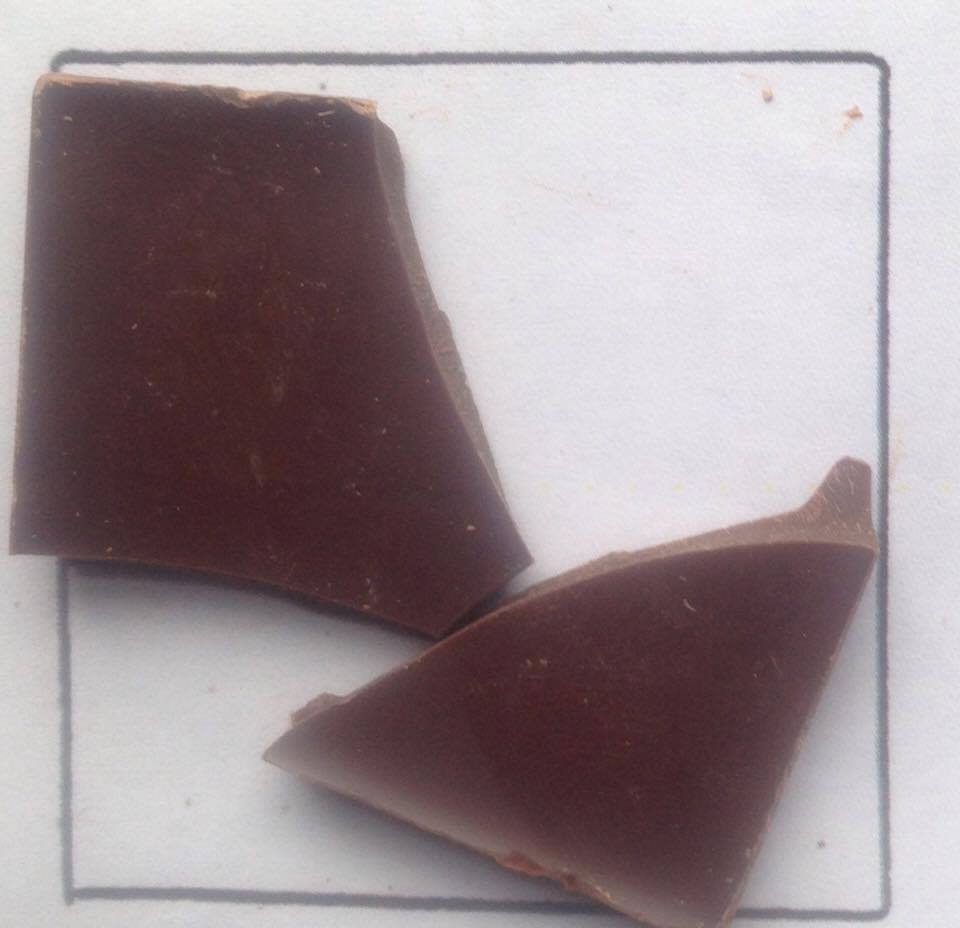“We all have the colors needed to make beautiful paintings.”
--Ken Kewley
"Walking to Ken Kewley's House in the Rain" collage on paper, 5x5" by Lauren Kindle (me)
It was raining steadily, so I put on my red raincoat and took my new umbrella, imagining, as I was opening the umbrella, that I was also opening my mind. I took along a pen and a sketchbook, and off I went through town, up the hill to Ken Kewley’s house.
I felt jittery all over, and my heart beat faster, because I was remembering my last visit with Ken Kewley not long ago, and how I had walked into his house and immediately felt overwhelmed by the art in it. Not only the art, but the art-making and all of its intoxicating debris, and the way that Ken talked about art, in his soft-spoken, humble way, saying things that made me forget to breathe. I felt a soul-pain, like my heart was a cup getting filled up…until it just cracked open.
I was part of a small gallery-tour, and we had reached the top floor of Ken’s house-studio. I couldn’t really concentrate, because I was so excited by everything I saw, but I remember him talking to the other people:
“If you go out and see a landscape and get excited about it,” he said, “You don’t have to go back to it, because the landscape is inside you.”
"Easton from Balcony" by Ken Kewley
When I heard that, I sat down in the corner of his studio and started crying. I was overwhelmed and mortified, barely enduring Ken's kind, reassuring words or the looks of sympathy from the other people taking the gallery tour. I ran home as fast as I could, and later that night I wrote Ken a long, heartfelt letter, covering the envelope with tiny paintings. A few days later he responded warmly, and invited me to visit him in his studio for a power-point presentation. How could I refuse?
This is my favorite painting (currently) by Ken Kewley. I like to pretend it's a painting of me, when I'm feeling overwhelmed and thinking too much!
And so now here I was, at his doorstep again, with my umbrella. I stepped out of the rain into a small, dark room. As my eyes adjusted to the dim light, my heart did a little flip, for right before me on the wall was a huge Kyle Staver painting! My infatuation with the artist Kyle Staver was new and intense, and I tried to describe my enthusiam to Ken, stumbling over the words. As we talked about Kyle Staver, he calmly led me into his kitchen and made us some tea. He handed me a little ziplock bag containing a tiny notepad, a pen, and a few pieces of thin cardboard: squares and rectangles.
“This is your kit,” he explained, and then he went on to show me his own notepad, filled up with small squares in which he had composed various geometric compositions.
My kit, including some of my own straight-line compositions...
“I’ve been filling up these notebooks since my heart surgery in 2010,” he said, as he showed me a few of the thousands of compositions he had made. “I carry this kit everywhere I go. Even waiting in the line at the grocery store, I can easily make a dozen compositions.”
“Do you ever go back and look at them and use them for paintings?” I asked.
“No,” he said. “You’re just trying to get them inside you, into your muscle-memory.” He got out a little piece of cardboard and started using it like a straight edge, making lines.
“I just make little compositions,” he said as he drew. “One after another, one after another. Don’t think about it. Just relate each line to the one before it. The mind wants to relate everything to everything else. If someone walks in the door wearing a yellow shirt, then you will notice a yellow pencil lying on the table, or another yellow object. It’s like that. The mind will compose, if you let it. Thinking is the worst thing you can ever do. If you think, it’s very hard for your unconscious to do anything. You don’t have to do anything really, you just put it down, really, it’s so simple.”
I watched him make a few tiny compositions; it did look easy…
These are some of Ken's drawings: "viola études" 144 square inches
Ken explained that his workshops had two basic goals: how to divide up a square into a composition, and how to get excited about color. “That’s all I teach,” he said.
He opened up the laptop and began showing me his power-point presentation. He began with his childhood, when his dad opened a paint store and painted large color strips all around the walls of the store. And now, that is essentially what Ken does himself, in his art: painting strips of colors, and using them like collage. He spoke about creating clear distinctions between shapes, and jumps in value.
“If your value is good, your color is going to be good,” he said. “Don’t try to match reality, but get the relationships right.”
The power-point presentation then shifted into a series of paintings by Braque, an artist I hadn’t known before. One painting showed a Braque still-life of grapes on a lettuce leaf, which was on a plate, which was on a table, which in turn was surrounded by white shapes.
"Fruit Dish and Clarinet" 1920 by Braque
“In this painting,” Ken pointed out, “Everything is being held by things. Everything is bracketed.” Ken encouraged me to look at more Braque paintings, as well as those by David Hockney, Diebenkorn, and Renoir.
“But, Renoir uses so many brush strokes and curves!” I protested.
“Yes,” Ken said, “But underneath all that fussiness, the structure is so strong. You want to have freedom, but it’s a freedom that you need to structure.”
"Gabrielle and Jean" one of my favorite Renoir paintings
He explained how you can always look for a few big shapes, maybe 4 or 5, shapes that connect with each other. So it’s not a house and a tree in a landscape, for example, but rather, two strong shapes relating to each other. Then, after you get those larger shapes working, you can go back in and fix the details.
He also suggested that when I’m painting, I find something that’s not the object, that the viewer is going to see first, and paint that. Then later, the viewer will begin to recognize objects. “It’s more exciting,” said Ken. “You’re not trying to confuse people, you’re just trying to slow down the looking.”
Slow down the looking.
I thought about that. I liked the way it sounded...
Landscape by Ken Kewley
He started talking more about color, which is something I felt insecure about, having recently realized how very ignorant I am. But Ken acted like it was no big deal to use color, as long as I thought in terms of abstraction.
“Force what you’re working on into abstraction,” he said. “It’s the abstraction that’s the art. The other thing is the imitation. For example, if you are painting a landscape, what is exciting you? Is it the fact that it’s a particular species of oak tree? More likely it’s the colors and the shapes that excite you! That’s abstraction.”
He showed me a photograph of several jars of colored water, left over from cleaning brushes. “If you get excited about this, that’s all the color theory you need,” he said. “And as for the composition, it’s either dark clusters on light, or light clusters on dark.”
"Chocolate Cake with Apricot" by Ken Kewley, oil on panel
The power-point presentation went on and on. Ken described so many fun, playful activities, little “art-games,” that he typically uses during his workshops for the sake of understanding composition. Ken spoke excitedly at this point, his ideas coming faster than his ability to speak. I had an image in my mind of him teasing Color and Composition out of their mysterious hiding places, just as if they were kids on the playground.
One game involves chocolate. You take a large square of chocolate, break it into two unequal pieces, and then put the pieces into a square composition, arranging the pieces in an interesting way, scanning and printing the compositions as you make them.
“Do a hundred of these,” Ken said. “It would be easy to do a thousand! Then imagine if you had three colors and shapes. The possibilities would be infinite! This is all you do in your whole art career. You don’t have to try hard. You don’t have to try desperately. People don’t want to see that. If you’re happy you’ll paint happy paintings. And if you try to paint a happy painting, it will be sad.”
He encouraged me to work from life as well as working from my inner mind. “They feed each other,” he said. “Go out to a landscape, but instead of painting in the traditional way, just make a whole lot of paint strips, each one based on a color you see. You can also do a bunch of little line drawings with the straight edge. Then go home, and make a cardboard landscape sculpture based on your memory of the landscape. Then paint that. Keep the planes flat.”
The same thing could be done with a figure. If you have a model, make a cardboard sculpture of her, and then work from that. “Don’t imitate,” he said. “Describe.”
seated woman with landscape. 14 x 11 inches, acrylic on wood panel
Over and over again, he insisted that it’s really simple, that the unconscious would do the work for me, if only I would stop thinking. I wondered if it really would be so simple for me, especially because I seem to be in the habit of agonizing over everything in my life. I can turn the simplest thing into a deeply complicated form of mental torture, without even intending to. But maybe I could learn to let go of all that? I sighed deeply.
“Painting should not be hard,” Ken said, “because, it’s hard enough.”
As we finished our tea and ate the chocolate, we realized that it was quite late in the day. The power point presentation had lasted three and a half hours! My head was spinning pleasantly as I put on my raincoat and said goodbye. I felt very happy, and ready to try new things.
Outside, the rain had stopped, and the bright sunlight dazzled my eyes.
The End
Painting color strips with my six-year-old son...
Note: I wrote this story in May, 2016. It's a true story!
Upcoming Workshops With Ken Kewley:
Warehouse 521, Nashville, TN - June 16 - 18, 2017
Three Pines Studio, Cross Village, MI - June 23 - 25, 2017
Truro Center for the Arts at Castle Hill, Truro, MA - July 3 - 7, 2017
Following Ken Kewley on Facebook is a good way of keeping you updated on workshops, as well as (most likely) cultivating a serious, long-term relationship with Braque.
Ken also has a website: www.kenkewley.com



